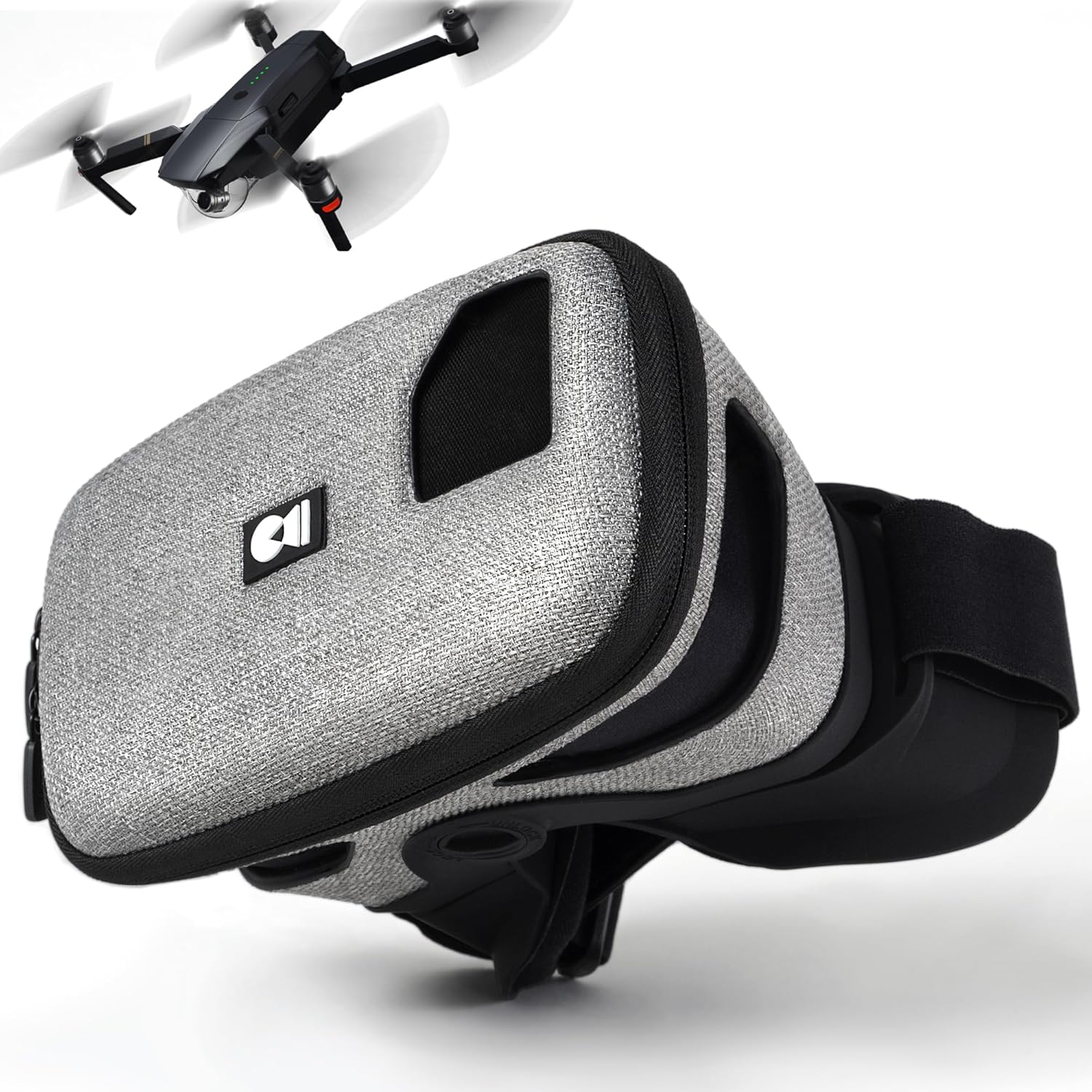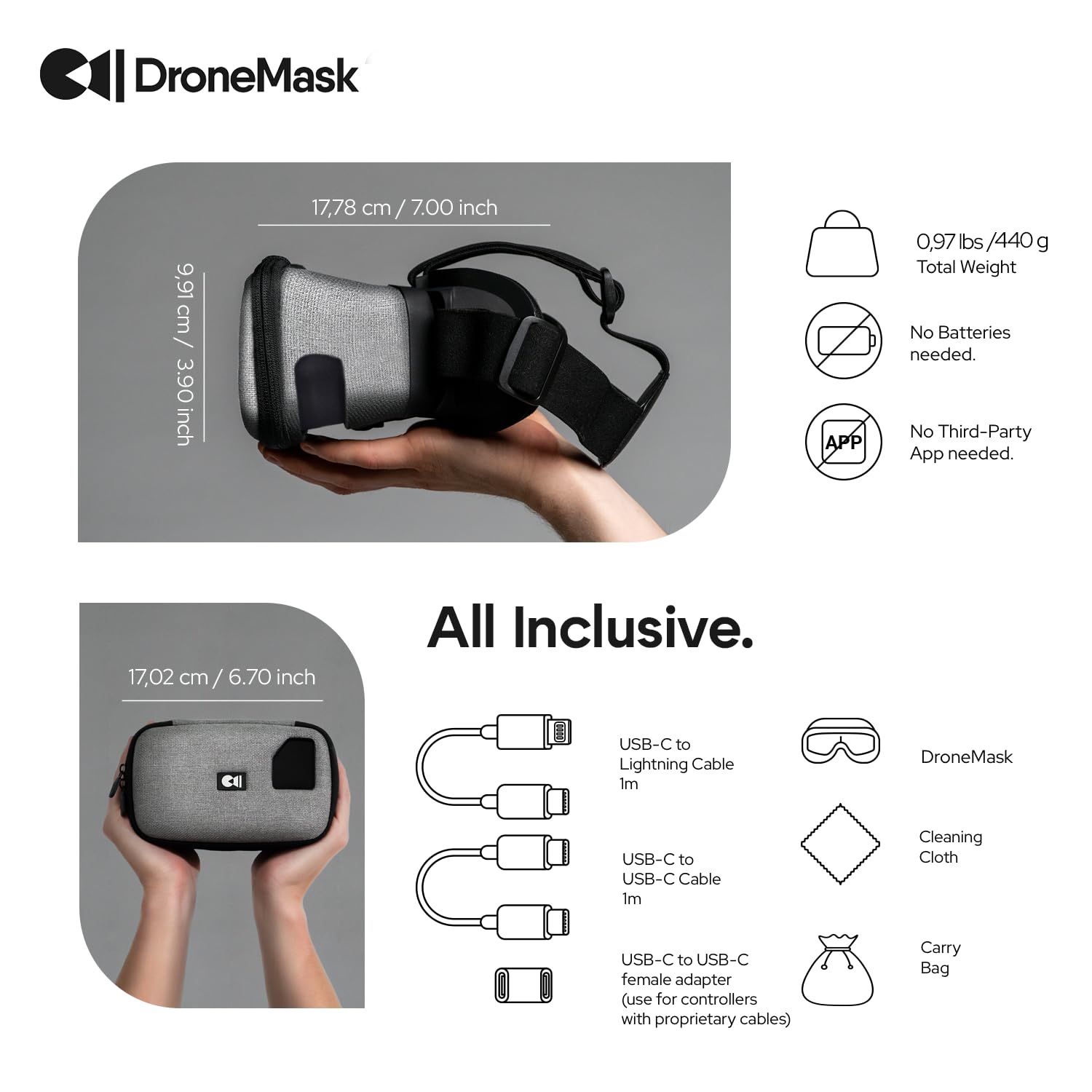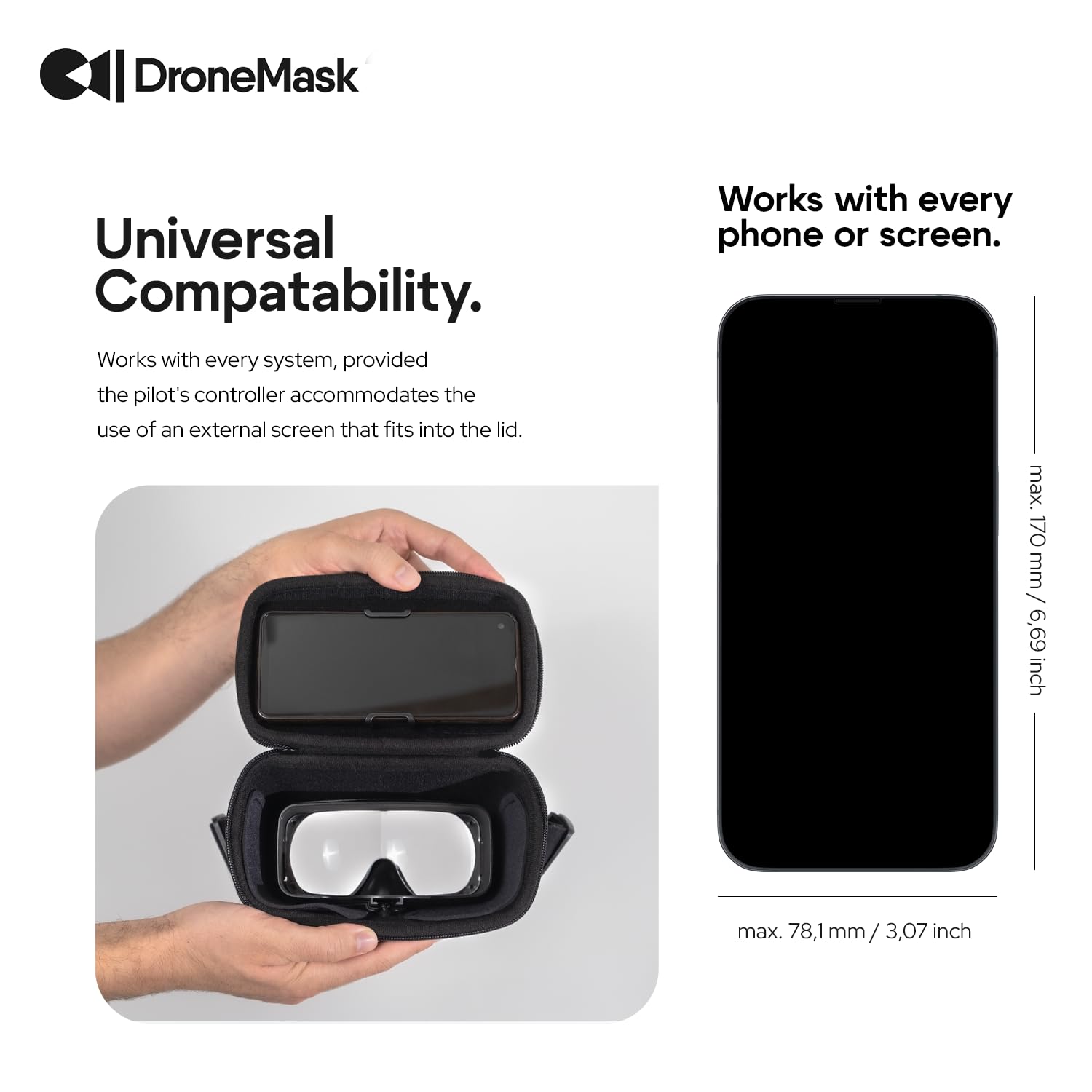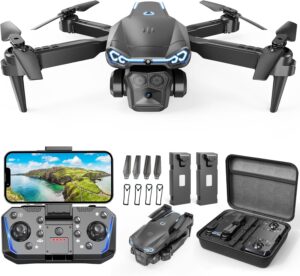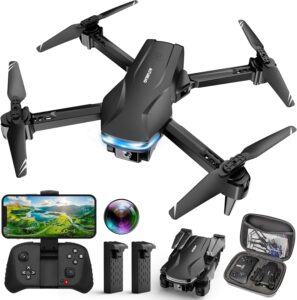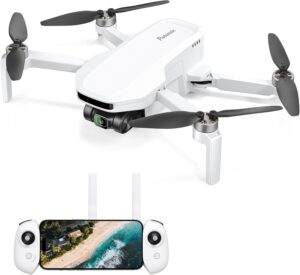Have we ever wished our drone flights felt like front-row seats at a private IMAX, minus the popcorn stuck to our shoes and the person behind us narrating the plot? We did, and that’s how we ended up strapping on the “2 | FPV Goggles for All Camera Drones | Unibody Lens | HD FPV Goggles | Compatible Versatile Skyview FPV Drone Goggles | Clear Immersive View | All GPS Camera Drone”—also known, more sensibly, as the DroneMask 2 FPV goggles.
What We’re Reviewing and Why It Matters
We’re talking about a set of FPV phone goggles built around a patented unibody lens that promises a clearer view than those split-screen VR headsets. The idea is simple and oddly luxurious: put our phone in the headset, block out the sun and the world’s distractions, and fly our camera drone like we’re perched right on the gimbal.
Why We Were Curious
We’ve tried cardboard viewers, plastic face boxes, and VR headsets that made our phone feel like it was peering through a bathroom window. This one claims 4x the resolution of split-screen setups, plus proper light sealing and comfort. We wanted to see if it would finally let us stop squinting and start flying.
The Pitch in Plain English
The DroneMask 2 promises crystal-clear FPV with any camera drone that streams to a phone, a glare-free enclosure, and comfort features like soft padding and adjustable straps. It’s the all-purpose headset that doesn’t demand proprietary connections or extra apps—just our normal controller and our smartphone.
2 | FPV Goggles for All Camera Drones | Unibody Lens | HD FPV Goggles | Compatible Versatile Skyview FPV Drone Goggles | Clear Immersive View | All GPS Camera Drone
Design and Build Quality
We always say design is what gets us excited, but build quality is what keeps us using it. The DroneMask 2 looks like a cross between a ski mask and a portable theater—sleek, padded, and unapologetically functional. Nothing flimsy or rattly, which is more than we can say for a few “budget FPV” face boxes we’ve tried.
The Unibody Lens: The Secret Sauce
Instead of splitting our phone screen into two tiny images, the DroneMask 2 uses one large, patented lens to magnify a single full-screen feed. The result is both simple and ingenious: our eyes work together rather than separately, and we don’t spend our flight adjusting two tiny pictures to line up like a suspicious pair of eyebrows.
Sun-Blocking Shell and Lightproof Access
We could write sonnets about glare, but we’d rather block it. The headset’s light-sealed design keeps the image punchy even at midday. Two lightproof screen access holes let us poke in a finger to change app settings without peeling the headset off our faces like an orange.
Comfortable Where It Counts
The face padding is soft and forgiving. The breathable fabric helps with long sessions, and the adjustable headstraps don’t give us a pressure headache halfway through a shot. We’ve worn heavier headsets that felt like a kettlebell strapped to our forehead. This one feels thoughtfully balanced.
Glasses-Friendly and Focus-Friendly
We appreciate that it works with eyeglasses, and there’s adjustable focus so we can tune the clarity without fancy gymnastics. Not all headsets get that right. This one lets us keep our dignity and our prescription intact.
Image Quality and Optics
We’re picky about image quality. If the view looks like a pixelated slideshow, we lose interest and altitude. The DroneMask 2’s optics make an immediate difference, especially compared to split-screen rigs that chop resolution in half and then ask our brain to fill in the rest.
4x Resolution vs. Split-Screen VR: What That Really Means
Most VR viewers rely on two separate images—one per eye—which effectively halves the resolution each eye gets. With the unibody lens approach, we see the phone’s full resolution as a single image, and both eyes share it. That translates to a noticeably sharper, more legible picture, especially for small on-screen text like telemetry, map insets, or camera settings.
Field of View and Immersion
The screen appears massive, like we’re peering through a huge window. We wouldn’t call it an ultrawide cinematic riot, but it’s immersive without distorting the edges into a funhouse. Our horizon lines stay straight, our map stays readable, and our stomach stays calm.
Focus Adjustment and Optical Comfort
Between the adjustable focal length and the large sweet spot of the lens, we could settle into a comfortable view quickly. No fiddly IPD dials or binocular drama. Less fiddling means more flying, which is always our favorite equation.
Distortion, Chromatic Aberration, and Screen Door
The lens keeps distortion in check. We didn’t notice chromatic fringing on high-contrast edges that would make us grumpy, and the “screen door effect” is minimal because we’re seeing the full-resolution phone screen, not two tiny starved halves. If we spot pixels, it’s usually our stream quality, not the lens.
Setup and Use
The setup is sensible: phone, controller, drone, headset. There’s no secret handshake or elaborate dongle ceremony.
What We Need to Fly
We need a standard controller that works with our drone and our smartphone. We run the drone’s official app on our phone, then slip the phone into the headset. That’s it—no third-party apps required, no suspicious downloads from corners of the internet we’d rather not visit.
Step-by-Step: Our First Flight
We started a few feet from the landing pad, partly because we’re cautious and partly because we’re clumsy when excited. We:
- Powered up the drone and controller.
- Opened the official flight app on our phone.
- Confirmed live video, GPS lock, and home point.
- Slid the phone into the headset and adjusted the straps.
- Used the screen access holes to tweak brightness and camera angle.
- Took off and just… moved. Smoothly.
We had a clear, sunproof view and could see exposure settings, map overlays, and telemetry without squinting. That’s more than we get on a bright day with a naked phone.
Using It With DJI Mini, Air, and Mavic Models
With drones like the DJI Mini 2, Mini 2 SE, Mini 3, Mini 4, Air 2, Air 2S, Air 3, or Mavic 3, we pair the phone with the controller in the usual way. If we’re using a controller with a built-in screen (like the DJI RC), we typically use a phone-based workflow or screen mirroring to the phone. The headset doesn’t require a special DJI mode—it just needs the phone’s live view, which those apps provide.
Using It With Autel, Hubsan, Fimi, Potensic, Skydio, Xiaomi, Parrot, and Others
If our drone’s ecosystem streams video to a standard smartphone app via a standard controller, we’re in business. Autel Evo Lite+, Evo Nano+, Fimi X8 series, Potensic Atom, and many Hubsan, Skydio, Xiaomi, and Parrot models fit that bill. We just launch the official app, confirm the live feed, and slide the phone in.
No Third-Party Apps—A Breath of Fresh Air
We didn’t need a special viewer app to warp or split the image, because there’s no split. If we can see our drone feed on our phone, we can see it in the headset. It feels refreshingly uncluttered, like a drawer with exactly one well-made tool inside.
Performance in Flight
We judge a headset by how it behaves when we’re doing something slightly nerve-wracking, like threading a drone through tree shadows at golden hour. The DroneMask 2 held steady.
Clarity Under Harsh Sunlight
We flew at noon with the sun’s full enthusiasm. The headset’s light seal kept the picture strong and contrasty, even when sunlight bounced off the river like a disco ball. We didn’t have to cup our hands around the screen like we were whispering to it.
Latency and Motion Comfort
Because the DroneMask 2 uses the phone’s live feed, latency depends on our drone and device. For camera drones designed for smooth video rather than race-quad reflexes, the lag feels entirely manageable. We kept our movements measured and our yaw gentle, and we avoided the wobbly, woozy feeling we sometimes get with high-latency feeds. If we’re chasing hummingbirds, it’s not the right class of gear. For cinematic flying, it’s a treat.
Range and Signal Reality Check
The headset doesn’t change the radio link—range and signal stability are still about our drone and controller. That said, by improving visibility, it helped us notice signal warnings sooner, which is its own kind of safety feature. When the map popped a caution, we actually saw it.
Battery Life Considerations
Headsets don’t drain batteries on their own, but our phone’s screen at high brightness does. We topped off the phone beforehand and brought a power bank for longer sessions. Our controller battery story stayed the same as ever, because the headset is just a viewer, not a transmitter.
Entertainment Beyond Drones
These goggles moonlight as a tiny theater. We admit it: we used them on the couch to screen a movie while pretending to “test the optics.” It felt pleasantly antisocial, like a luxe version of hiding under the blankets with a flashlight and a paperback.
Personal Cinema Mode
Any full-screen video app turns our phone into a private cinema. The unibody lens keeps the picture sharp and the world out. We watched a nature documentary and didn’t once get distracted by the laundry basket looking judgmental in the corner.
Gaming and HDMI Sources
We can route console or PC gameplay to our phone via compatible HDMI-to-smartphone adapters or streaming apps, then pop the phone into the headset. It’s functionally the same as having HDMI goggles, but with the phone doing the display work. The key is a good adapter and stable stream. When it clicks, it feels gloriously ridiculous and surprisingly fun.
In-Depth Compatibility
We care about what works now, not after a firmware odyssey. The DroneMask 2 is broadly compatible because it rides on the back of our smartphone, not some secret protocol.
Drone Families That Played Nicely
- DJI: Mini 2, Mini 2 SE, Mini 3, Mini 4, Air 2, Air 2S, Air 3, Mavic 3 series
- Autel: Evo Lite+, Evo Nano+
- Potensic: Atom
- Fimi: X8 series
- Hubsan, Skydio, Xiaomi, Parrot: assorted models with phone-based live video
If our drone’s workflow is “start app, see live feed,” the headset is ready to go. We just make sure our controller plays well with our phone.
Phone Size and Fit
Modern iPhones and Android flagships fit, cases off or on depending on your case’s bulk. The access holes help us adjust without constantly opening the chamber. If our phone is absolutely enormous or wearing a rubberized exoskeleton, we might need to slim down the case.
Controllers with Built-In Screens
If our controller has its own screen and doesn’t require a phone, we can often mirror that output to a phone using screen mirroring or other solutions. It’s not always plug-and-play, but there’s usually a path. We favor the classic “controller + phone” setup because it’s simplest.
Portability and Durability
We like gear that survives being tossed in a backpack next to a rogue granola bar. The DroneMask 2 feels sturdy, with fabrics and seams that held up to a few impromptu trunk tosses. It’s not a hard case, so we don’t stack bricks on it, but it travels well with a little common sense.
Packing for Field Work
We stash a microfiber cloth inside to keep the lens pristine, and we bring our phone cable, a spare remote cable, and a cleaning wipe for the phone screen. The headset plays nicely with a medium-sized drone bag and doesn’t demand a dedicated suitcase.
Maintenance and Care
It takes very little to keep it happy: don’t scratch the lens, don’t trap sand in the padding, and clean it like you’d clean something that spends time on your face.
Lens, Padding, and Heat
We use a blower and lens cloth, dab not rub, and give the padding a chance to air out after a hot flight day. As for heat, we don’t leave it baking in the car. Our phone appreciates that too.
Comparisons That Help
We never buy gear in a vacuum (though we have used it to vacuum). Here’s how DroneMask 2 stacks up conceptually.
DroneMask 2 vs. Generic Split-Screen VR Viewers
- Clarity: DroneMask 2 wins. Sharing one full-resolution image beats two low-res halves.
- Ease: No split-view app or lens fussing. One feed, big lens, done.
- Comfort: The padding and headstraps feel more refined than the budget bins of the world.
DroneMask 2 vs. Dedicated Digital FPV Goggles
Dedicated goggles tied to a specific ecosystem (like manufacturer-branded goggles using proprietary links) can offer ultra-low latency and direct integration. They’re great for certain drones, but they’re expensive and limited to specific models. DroneMask 2 is the universal option: it gives us camera-drone FPV across many brands without buying into a closed garden.
Who These Goggles Are For
If we fly camera drones for cinematic footage, mapping, or photography and we want a brighter, clearer view in daylight, this is exactly the upgrade we’ve wanted. If we’re racing quads through abandoned warehouses, we’ll want a dedicated low-latency system. Different tool, different job.
Features and Benefits at a Glance
A quick breakdown helps when we’re trying to remember if we told our friend about the glare reduction or just gestured wildly in its general direction.
| Feature | What It Is | Why It Matters |
|---|---|---|
| Patented Unibody Lens | A single large lens for full-screen viewing | 4x the effective resolution vs. split-screen viewers; clearer telemetry and image detail |
| Sun/Glare Blocking | Light-sealed shell with screen access holes | Crisp view at noon; we adjust settings mid-flight without removing the headset |
| Comfort Build | Soft face padding and breathable fabric | Longer sessions without forehead fatigue |
| Eyeglass Compatible | Fits over most glasses; adjustable focus | We keep our prescription; less eye strain |
| Universal Compatibility | Works with phone-based drone apps | DJI, Autel, Potensic, Fimi, Hubsan, Skydio, Xiaomi, Parrot, and more |
| No Third-Party Apps Needed | Uses the standard flight app | Simpler setup; less fiddling before takeoff |
| Entertainment Mode | Cinema/gaming with phone as the display | Private movie theater or gaming headset anywhere |
| Adjustable Headstraps | Custom fit for different head sizes | Stays planted during head turns |
| Lightproof Access Holes | Finger access without removing headset | We can tweak camera or map settings on the fly |
Compatibility at a Glance
We keep a short list handy because our memory is a polite fiction on the best of days.
| Drone Family | Example Models | Controller Requirement | Notes |
|---|---|---|---|
| DJI Mini Series | Mini 2, Mini 2 SE, Mini 3, Mini 4 | Standard controller + smartphone | Open DJI app, confirm video, insert phone |
| DJI Air Series | Air 2, Air 2S, Air 3 | Standard controller + smartphone | Same workflow as above |
| DJI Mavic 3 Series | Mavic 3, Mavic 3 Classic, Mavic 3 Pro | Standard controller + smartphone | For controllers with screens, consider phone mirroring |
| Autel | Evo Lite+, Evo Nano+ | Standard controller + smartphone | Use Autel’s official app |
| Fimi | X8 Series | Standard controller + smartphone | Straightforward phone feed |
| Potensic | Atom | Standard controller + smartphone | Works via the Potensic app |
| Hubsan, Skydio, Xiaomi, Parrot | Selected models | Standard controller + smartphone | If the ecosystem streams to phone, it’s a go |
Pros and Considerations
We don’t believe in pretending everything is perfect. Honest lists keep us from making purchases we regret and then inventing excuses for years.
| What We Loved | Why We Loved It |
|---|---|
| Clear, single-image optics | Text and HUD elements stay readable; fewer headaches |
| Glare-free daylight visibility | We fly at noon without squinting at life |
| Works with many drones | No ecosystem lock-in; one headset for multiple fleets |
| Comfortable padding and fit | We can shoot longer without face gripes |
| Screen access holes | Convenience that becomes second nature |
| Eyeglasses and focus friendly | Less compromise for our eyesight |
| Cinema and gaming utility | It’s not just a drone tool; it’s a pocket theater |
| What to Consider | What It Means |
|---|---|
| Latency depends on phone/drone | Fine for camera drones; not for racing reflexes |
| Phone battery drain | Bring a power bank for long sessions |
| Not a hard shell | Treat it like optics, not a football |
| Controller with built-in screen | Might need mirroring to a phone |
Real-World Flying Notes
We used the headset on a coastal shoot and watched the sun bounce off the water like it had something to prove. The DroneMask 2 made the picture trustworthy in a way our bare phone never could. We saw details in the shadows of docks, could track exposure precisely, and didn’t have to hunch like we were plotting a heist.
Composition and Framing
We framed shots more confidently because the big view helped us notice crooked horizons and odd tree limbs sneaking into the corners. When we panned across a bridge and realized a bus was crossing, we adjusted to catch it precisely. That’s the magic of a bigger, clearer view: we simply see more.
Focus and Camera Settings
We tweaked shutter and ISO mid-flight through the access holes without muttering at the sun. When we changed ND filters between flights, the consistency of the view made it easier to judge if we needed another stop.
Comfort Over Time
We flew two batteries back-to-back and didn’t feel that dull ache behind the eyes we sometimes get with narrow lenses. The padding stayed comfortable, and the straps didn’t creep. If we needed a short break, we just lifted the headset like a visor and checked the scene.
Glasses Situation
We kept our glasses on and found the fit generous enough to avoid nose-bridge warfare. Adjusting the focus meant we didn’t have to jam our frames into the foam or accept a blurry compromise.
Safety and Situational Awareness
We keep an eye on local regulations and fly responsibly. Headsets reduce our peripheral vision, so we use a visual observer when needed. The bright, legible HUD helps us spot alerts, battery levels, and warnings faster, which ironically improved our situational awareness of drone status even as we blocked out the ambient world.
Return-to-Home and Alerts
When the app gave us a “High Wind” warning, we actually saw it instead of shrugging and hoping for the best. We set a comfortable return altitude before takeoff and watched home point status closely. Clear view equals better decisions.
Using It for Training and Clients
We’ve brought the headset to shoots for clients who want to “see what the drone sees.” They loved the big, bright view, and it made explaining shots easier. For training new pilots, it helps them grasp composition and camera behavior quickly.
Sharing the Experience
We swap the headset between flights, sanitize the padding like considerate humans, and let others take a turn. It transforms observers from polite nodders into enthusiastic collaborators.
Troubleshooting Tips That Saved Us
Because nothing ruins a day like being baffled by a simple setting five minutes before sunset.
If the Picture Looks Soft
- Clean the phone screen and the headset lens. It’s always a smudge.
- Adjust the focus wheel until UI text is tack sharp.
- Check app resolution/bitrate settings.
If We Can’t Reach a Button
- Use the access holes to swipe or tap.
- Relocate on-screen controls to easier spots if the app allows.
- Make sure phone is seated correctly—shift by a few millimeters if needed.
If the Phone Overheats
- Reduce screen brightness slightly; the enclosure helps keep things visible.
- Close background apps.
- Give the phone shade between flights.
The Entertainment Angle, Revisited
We used it on a flight, then inside for a movie. Our couch became a row of one. The outside world tried to get our attention—someone asking if we’d seen their keys, a cat debating our ankle—but the headset kept us happily insulated without feeling claustrophobic.
Gaming Lag Reality
For casual games, streamed or mirrored, it’s a fun novelty that edges into “we could get used to this.” For competitive titles where milliseconds matter, we treat it like a toy, not a tournament setup.
Little Things We Appreciated
We loved the way the access holes are lightproof, the fabric feels breathable instead of plasticky, and the straps adjust without that Velcro scream that wakes up a child in a two-mile radius. The headset quietly gets out of our way and lets us focus on what we’re doing.
Build Quality Confidence
Nothing creaked, and nothing felt like it would bail on us after a month. We didn’t baby it, and it didn’t complain.
Common Questions We Asked Ourselves
Can we wear eyeglasses?
Yes. The headset accommodates most eyeglass frames, and the adjustable focus lets us fine-tune clarity.
Do we need special apps?
No. The whole point is using the drone’s standard app. We start the app, verify video, and insert the phone.
Is there HDMI input?
The headset uses the phone as the display. For HDMI sources like consoles or laptops, we use a compatible HDMI-to-smartphone adapter or streaming method to send the image to the phone, then view it in the headset.
Will we get motion sick?
Most camera-drone workflows are smooth and cinematic, and the clear optics reduce strain. If we’re sensitive, we keep movements gentle and take short breaks.
How is this better than split-screen viewers?
We get the phone’s full resolution as one image, which is dramatically clearer than two low-resolution halves. No IPD hassles, and no special split-view app needed.
Does it help with bright sun?
Absolutely. Blocking glare is one of its headline strengths, and it’s noticeable on the first flight.
How It Shaped Our Flying
We hesitated to say “game-changer” because it’s a phrase that gets tossed around like confetti, but it did shift our habits. We fly more confidently at midday, we review framing more carefully, and we’re less likely to miss subtle details in the scene. We also stop fiddling with makeshift sun hoods that flap in the breeze like uncooperative flags.
Creative Workflow Wins
We now start with a quick headset pass to frame the first shot, then proceed to alternate between headset and handheld viewing depending on the scene. It makes the day feel calmer, which is half the victory.
Value and Alternatives
For the cost of a decent accessory, we get an upgrade that works across multiple drones, not just one brand. Dedicated proprietary goggles can run into multiple times the price and lock us into a single ecosystem. If we already own several drones from different companies, this one headset is the harmonizer.
Future-Proofing
Because it leans on our phone, as our phone gets better screens and brighter displays, the headset effectively gets better too. It’s the rare accessory that rides the wave of phone upgrades without demanding its own yearly refresh.
A Few Field-Test Scenarios
Urban Rooftops at Noon
Glare is the enemy. The headset turned the phone feed into something we trusted, letting us compensate quickly for highlight clipping and read histograms without contorting our necks into shade.
Forest Trails at Golden Hour
Dappled light and deep shadows often hide stray branches waiting to photobomb our shot. The larger, clearer view made those little threats obvious.
Beach Wind and Spray
We don’t recommend beach sand in any optics, but the headset stayed comfortable as we faced the sun. We saw wave patterns clearly and adjusted our angle to catch texture in the water without guessing.
The Fine Print We Live By
We keep batteries charged, carry a microfiber cloth, and fly within the rules. The headset is a tool, not a miracle worker, but it made our work feel like less of a struggle and more of a pleasure. That counts.
Quick Feature Recap for Our Future Selves
Because we will, inevitably, be asked “what’s that” by a curious bystander who assumes it’s night-vision gear.
- Unibody lens: single, large lens with 4x effective resolution vs split-screen.
- Light-sealed shell with access holes: bright-view flying, effortless adjustments.
- Comfort: padded face interface, breathable fabric, adjustable straps.
- Works with glasses and includes focus adjustment.
- Universal with phone-based drone apps; no extra apps demanded.
- Entertainment-ready for movies and casual gaming via phone.
A Short Story in Three Flights
- Flight One: We stood in a field at noon, put on the headset, and could finally see everything. We framed a shot of a barn whose red paint was old enough to vote. It looked terrific.
- Flight Two: We shot a river at sunset. Shadows were moody but readable, and we caught the moment a kayaker entered the frame, paddling like they were late for a secret meeting.
- Flight Three: We let a friend try it. They said, “Ohhh,” in a way that means “I didn’t know it would actually be this good,” which we consider the crown emoji of feedback.
Final Verdict
We’ll keep it simple: the DroneMask 2 FPV headset is the clearest, most comfortable way we’ve found to use our phone as a bright, immersive viewfinder for camera drones. The unibody lens turns tiny, squinty app controls into something we can read without begging the sun for mercy. The build is comfortable, the access holes are elegantly practical, and it works with a long list of drones we already own.
If our priorities are cinematic flying, better composition, and a calm, glare-free view that doesn’t demand extra software gymnastics, this is an easy recommendation. We’ve tried a lot of ways to tame sunlight and enlarge our feed; this is the first one that felt like a true, lasting upgrade rather than a clever workaround. In short, it stays in our drone bag because it earns the space every time we fly.
Disclosure: As an Amazon Associate, I earn from qualifying purchases.
